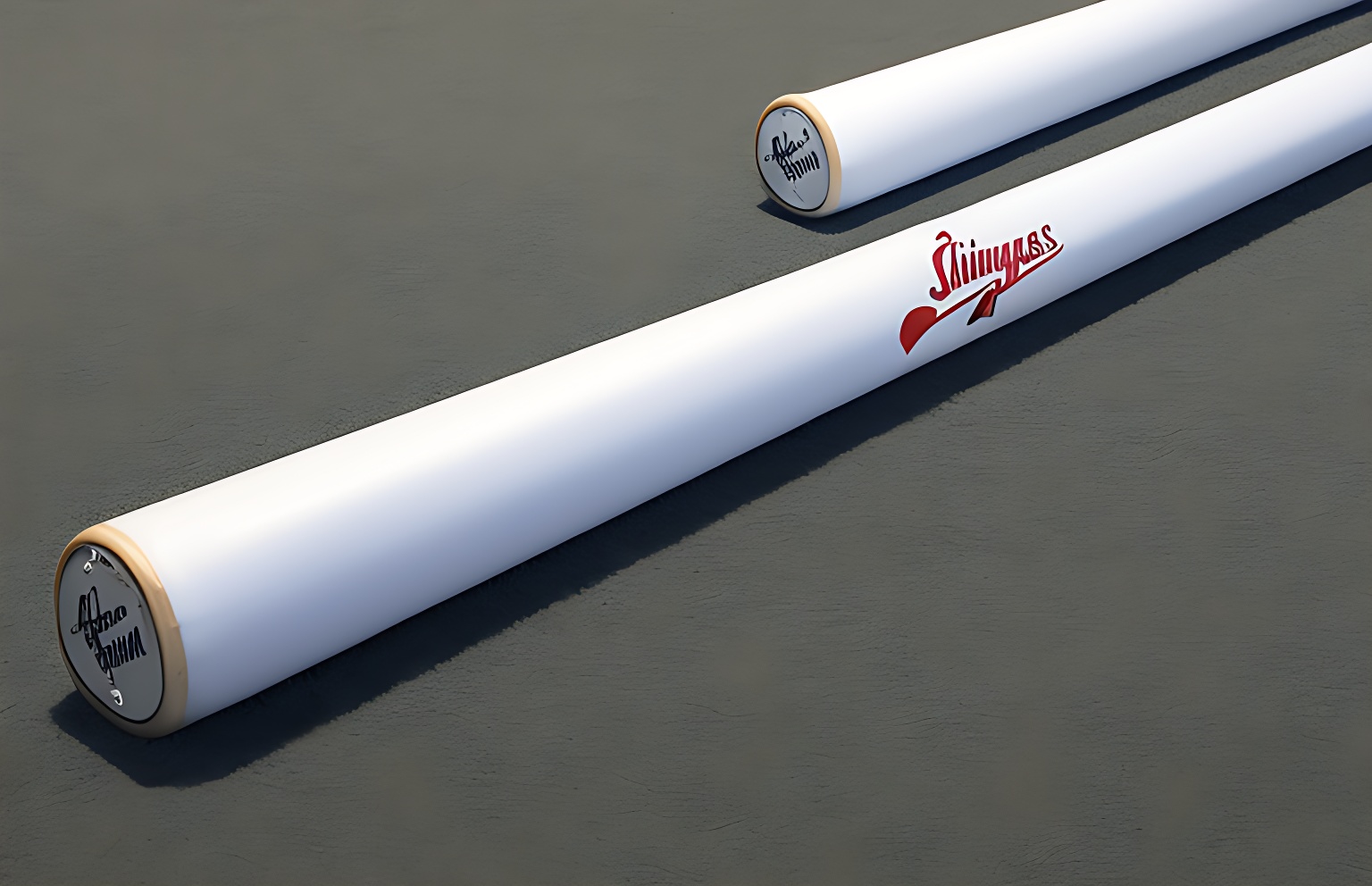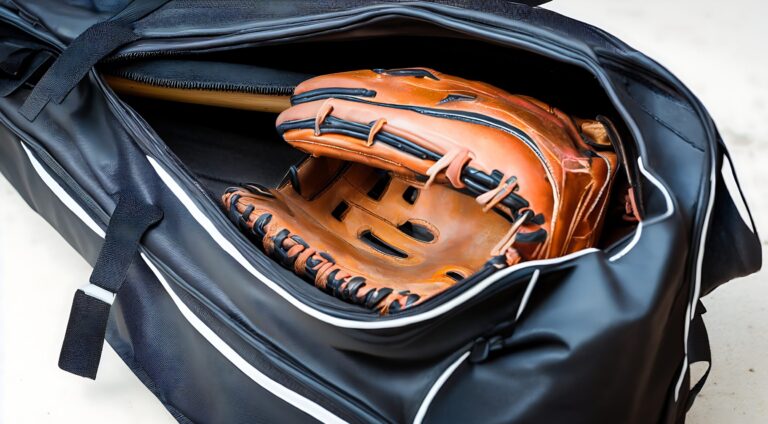Why Does Little League Use Aluminum Bats?
Little League baseball is a cherished pastime for children all over the world, and it’s not uncommon to see young athletes swinging aluminum bats during their games.
However, the use of these metal bats has sparked debate among players, coaches, and fans alike.
While some argue that aluminum bats provide more power and a larger sweet spot for young players, others worry that they pose a safety risk due to the increased ball speed and potential for batted ball injuries.
So why does Little League use aluminum bats?
In this article, we’ll take a closer look at the history of aluminum bats, their benefits and drawbacks, and the reasons behind their continued use in youth baseball.
Why Does Little League Use Aluminum Bats?
Little League Baseball is a youth baseball organization that has been around for over 80 years. It provides an opportunity for children to learn about and participate in the sport of baseball. One of the unique aspects of Little League Baseball is that it uses aluminum bats rather than wooden bats. This decision has been met with some controversy, but there are several reasons why Little League uses aluminum bats. You may read also the guide on the Best Baseball Bats for Autographs
Performance Reasons for Using Aluminum Bats in the Little League:
One of the primary reasons that Little League uses aluminum bats is for performance reasons. Aluminum bats are lighter than wooden bats, which means that players can swing them faster. This increased bat speed can result in more power when hitting the ball. Additionally, aluminum bats have a different balance than wooden bats. This can allow for a different type of swing, one that can generate more power and speed.
Another performance advantage of aluminum bats is the bigger barrel. The bigger barrel allows for a larger sweet spot on the bat. A sweet spot is the area on the bat that when hit, results in the best ball-flight characteristics. With a larger sweet spot, players have a better chance of hitting the ball with the right part of the bat, resulting in better hits.
Finally, aluminum bats are harder and have a better trampoline effect than wooden bats. The trampoline effect refers to the rebound of the ball off the bat. With aluminum bats, the ball can rebound off the bat at a higher speed than with a wooden bat. This can result in more power and distance on the hit. You may read also the guide on What Size Baseball Bat for 8 Year Old
Weight and Different Balance:
One of the significant advantages of aluminum bats is their weight. Aluminum bats are lighter than wooden bats, which makes it easier for children to swing and hit the ball with more power. The weight of the bat is essential, especially for children who may not have developed the strength to handle a heavier wooden bat.
Aluminum bats also have a different balance than wooden bats. The balance refers to the distribution of weight throughout the bat. With aluminum bats, the weight is distributed differently, making the bat easier to control. This can result in better hits and more power. You may read the ultimate guide on the best baseball bats under $300
Bigger Barrels:
Aluminum bats have a larger barrels than wooden bats. The barrel is the thickest part of the bat and is the part of the bat that comes into contact with the ball. The larger barrel of the aluminum bat provides a larger sweet spot, making it easier for children to make contact with the ball. This can result in more hits, better hits, and more runs.
Harder And With Better Trampoline Effect:
Another advantage of aluminum bats is that they are harder and have a better trampoline effect than wooden bats. The hardness of the bat refers to its resistance to being compressed. The harder the bat, the more power it can generate on impact. With a better trampoline effect, the ball rebounds off the bat at a higher speed, resulting in more power and distance.
Economic Reasons for Using Aluminum Bats in the Little League:
In addition to performance advantages, there are also economic reasons why Little League uses aluminum bats. Aluminum bats are cheaper to produce than wooden bats, making them more affordable for the league to purchase. Additionally, aluminum bats are more durable than wooden bats, meaning that they can last longer and require fewer replacements.
Finally, aluminum bats are easier to maintain than wooden bats. Wooden bats require regular maintenance to keep them in good condition. They need to be kept dry and away from moisture to prevent warping and cracking. Aluminum bats, on the other hand, are more resistant to damage from moisture and require less maintenance overall. You may check also the guide on the best baseball bats for high school
When Did Little League Start Using Aluminum Bats?
Little League Baseball, a youth baseball organization, started using aluminum bats in the 1970s. Prior to this, the organization had used wooden bats exclusively since its inception in 1939.
The use of aluminum bats in Little League baseball brought about a significant change in the sport. Aluminum bats are lighter and more durable than wooden bats, which allowed younger players to hit the ball farther and with more power. This change made the game more exciting and encouraged more children to participate in the sport.
However, the use of aluminum bats in Little League baseball has not been without controversy. Some critics argue that the increased power of aluminum bats poses a safety risk to young players. Balls hit with aluminum bats can travel at higher speeds than those hit with wooden bats, making it difficult for pitchers and infielders to react and defend themselves.
In response to these concerns, Little League baseball has implemented regulations to limit the performance of aluminum bats, including restrictions on the size and weight of the bats. These regulations have been updated over the years to keep pace with advances in bat technology and to ensure the safety of young players.
Can You Use a Wood Bat in Little League?
The use of wood bats in Little League is generally not allowed for safety reasons. Little League Baseball has strict regulations in place to ensure the safety of its players, and one of these regulations pertains to the type of bat that can be used.
Little League players are required to use bats that meet specific criteria outlined by the organization. These bats are typically made of composite or aluminum materials, which provide a lighter and more durable option than wood. The use of wood bats can increase the risk of injury due to their heavier weight and increased likelihood of breaking or splintering upon contact with the ball.
That being said, there are some situations in which wood bats may be allowed in Little League. For example, wood bats may be permitted in certain tournaments or exhibition games, or in special situations where the league has approved their use. However, these situations are rare and generally require special permission from the league.
In summary, while wood bats may be preferred by some players or coaches for their traditional feel and sound, they are generally not allowed in Little League due to safety concerns. Little League Baseball has established strict regulations to ensure the safety of its players, and these regulations include guidelines for the type of bat that can be used during play. You may read the expert guide on the best fungo bats for baseball
Aluminum vs Wood Bats – The Differences
Baseball bats are an essential part of the game, and players have a choice between two main materials: aluminum and wood. Both have their advantages and disadvantages, and the decision of which to use depends on the player’s preference and the league regulations.
Wood bats are the traditional choice and have been used in baseball for over a century. They are typically made from maple, ash, or birch wood. They offer a natural feel and sound and are favored by many professional players. However, wood bats are more fragile and have a smaller sweet spot, making them more challenging to hit consistently.
On the other hand, aluminum bats are lighter and more durable than their wooden counterparts, making them a popular choice for younger and amateur players. They also have a larger sweet spot, making it easier to make contact with the ball, and can hit the ball further due to the trampoline effect created by the bat’s construction. However, aluminum bats have a different feel and sound compared to wood bats, which can be off-putting for some players.
It’s worth noting that some leagues have regulations on the type of bat that can be used. For example, in professional baseball, only wood bats are allowed. It’s essential to check with the league regulations before deciding which bat to use.
The choice between aluminum and wood bats ultimately comes down to personal preference and league regulations. Both materials have their benefits and drawbacks, and it’s up to the player to decide which suits them best.
Can aluminum bats crack?
Yes, aluminum bats can crack, just like any other piece of equipment. Although they are typically more durable than wooden bats, they are not indestructible and can suffer from damage over time or through impact.
The most common cause of cracking in aluminum bats is hitting the ball in the wrong spot, known as “off-center hits.” These hits can cause the bat to vibrate excessively, which can lead to small cracks or fractures in the aluminum. Over time, these cracks can worsen, eventually causing the bat to break completely.
Another cause of cracking in aluminum bats is overuse or misuse. Bats that are used excessively, especially in cold temperatures, may be more prone to cracking due to the increased stress placed on the material. Additionally, using an aluminum bat to hit objects other than baseballs, such as fence posts or rocks, can also cause cracks and damage.
It is important to note that many leagues and organizations have specific rules and regulations regarding the use of aluminum bats, including maximum weight and length, and specific certifications. Using a damaged or cracked bat may not only affect performance but could also result in penalties or disqualification.
Regular inspection and maintenance of aluminum bats can help identify any potential cracks or damage before they become a more serious issue. If a crack is discovered, it is recommended to retire the bat and replace it with a new one to avoid potential injury or further damage. You may read the guide on the best wooden baseball bats under $100
Conclusion
In conclusion, Little League uses aluminum bats primarily for safety reasons. Compared to wooden bats, aluminum bats have a larger sweet spot, which means that it is easier for players to hit the ball. This reduces the risk of players missing the ball and accidentally hitting someone else with the bat. Additionally, aluminum bats tend to be lighter, making them easier for younger players to swing and control. While some argue that aluminum bats can cause the ball to travel faster and further, Little League has established strict regulations to ensure that the performance of the bats is within safe limits.
FAQs
Why can t Little League use wooden bats?
Little League has specific rules that prohibit the use of wooden bats due to safety concerns. Wooden bats are denser and heavier than aluminum or composite bats, which can result in faster and harder hits. This increases the risk of injury for both players and spectators.
Can you use a wooden bat in Little League?
Yes, wooden bats can be used in Little League, but they must meet certain requirements. The bat must be made of a single piece of wood and cannot have a diameter greater than 2 5/8 inches. Additionally, the bat must be marked with the “USA Baseball” logo indicating it meets Little League regulations. You may check also the best baseball bat for self defense
Does the bat matter in Little League?
Yes, the type of bat used in Little League matters. Little League Baseball has strict rules and regulations regarding the size, weight, and composition of bats that can be used in their games. These rules are in place to ensure the safety of the players and to maintain a level playing field.
Do wood bats lose their pop?
Yes, wood bats can lose their pop over time due to repeated use and impact. The wood can become compressed and less resilient, leading to a decrease in the ball’s exit velocity off the bat. Proper care and maintenance, such as avoiding using the bat in colder temperatures, can help prolong its lifespan.







